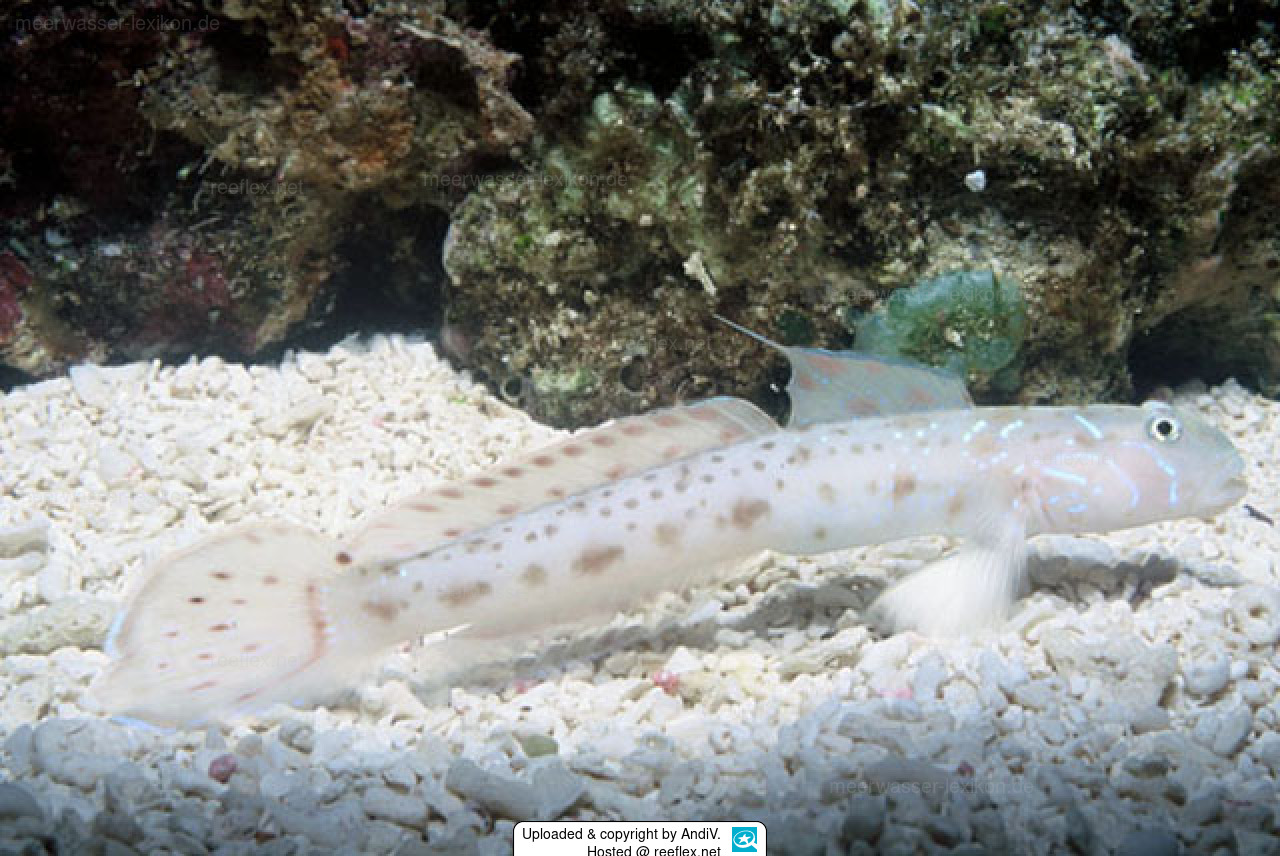Info
Iwata, Hosoya & Niimura, 1998
Special thanks for the first photo of Echinogobius hayashii to Dr. Fenton Walsh, Australia.
The goby was named in honor of Masayoshi Hayashi.
A pale greyish sand-dwelling goby with a row of large brown spots along the midsides, smaller black spots on the fins and upper sides, a blue-edged pink to reddish bar from the back of the head to the cheek, and pale bluish spots and lines on the head and anterior body.
Source: Fishes of australia
The goby lives reef-associated in clear waters with fast tidal current on sandy bottoms in a depth range 1 - 20 m in the Indo-West-Pacific (West-Australia and Japan)
It retreats in burrows made possibly by sea cucumbers or polychaetes.
Classification: Biota > Animalia (Kingdom) > Chordata (Phylum) > Vertebrata (Subphylum) > Gnathostomata (Superclass) > Pisces (Superclass) > Actinopterygii (Class) > Perciformes (Order) > Gobiidae (Family) > Gobiinae (Subfamily) > Echinogobius (Genus) > Echinogobius hayashii (Species)
Jumping guard
A jumping guard prevents (nocturnal) fish from jumping out.
Wrasses, blennies, hawkfishs and gobies jump out of an unprotected tank in fright if their night rest is disturbed, unfortunately these jumpers are found dried up in the morning on carpets, glass edges or later behind the tank.
https://www.korallenriff.de/en/article/1925_5_Jump_Protection_Solutions_for_Fish_in_the_Aquarium__5_Net_Covers.html
A small night light also helps, as it provides the fish with a means of orientation in the dark!
Special thanks for the first photo of Echinogobius hayashii to Dr. Fenton Walsh, Australia.
The goby was named in honor of Masayoshi Hayashi.
A pale greyish sand-dwelling goby with a row of large brown spots along the midsides, smaller black spots on the fins and upper sides, a blue-edged pink to reddish bar from the back of the head to the cheek, and pale bluish spots and lines on the head and anterior body.
Source: Fishes of australia
The goby lives reef-associated in clear waters with fast tidal current on sandy bottoms in a depth range 1 - 20 m in the Indo-West-Pacific (West-Australia and Japan)
It retreats in burrows made possibly by sea cucumbers or polychaetes.
Classification: Biota > Animalia (Kingdom) > Chordata (Phylum) > Vertebrata (Subphylum) > Gnathostomata (Superclass) > Pisces (Superclass) > Actinopterygii (Class) > Perciformes (Order) > Gobiidae (Family) > Gobiinae (Subfamily) > Echinogobius (Genus) > Echinogobius hayashii (Species)
Jumping guard
A jumping guard prevents (nocturnal) fish from jumping out.
Wrasses, blennies, hawkfishs and gobies jump out of an unprotected tank in fright if their night rest is disturbed, unfortunately these jumpers are found dried up in the morning on carpets, glass edges or later behind the tank.
https://www.korallenriff.de/en/article/1925_5_Jump_Protection_Solutions_for_Fish_in_the_Aquarium__5_Net_Covers.html
A small night light also helps, as it provides the fish with a means of orientation in the dark!







 AndiV
AndiV

